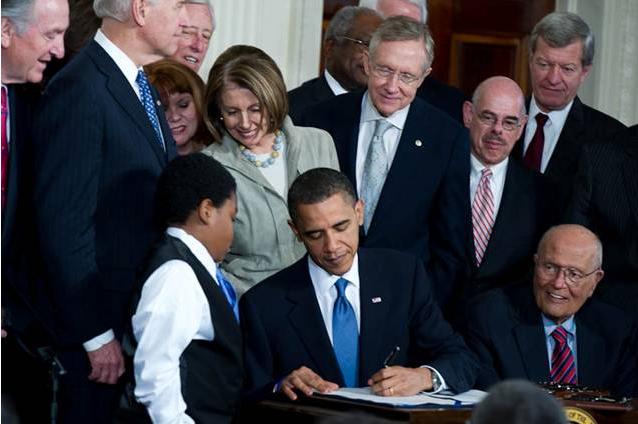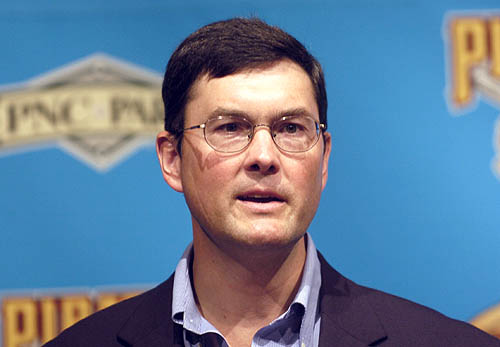It’s definitely an act, as opposed to a legitimate attempt to reduce bureaucracy and thereby reduce costs in what used to be a faintly uncomplicated sector of the economy. In fact, the bureaucracy the Act creates is staggering in its depth. It not only makes private health a public concern, but places the mandatory purchase of insurance under the purview of the Internal Revenue Service. Buy coverage or pay a fine. In other words, You’re going to be covered, and you’re going to like it. Do we make ourselves clear?
How do an ostensibly free people get collectively subjected to such a mandate? Not without substantial effort on the part of a political class committed to see its social agenda enacted. In several steps:
1. Come up with a baseless allegation, quantify it, but do so in such a way that it can’t be disproven, e.g. “47 million Americans don’t have health insurance!”
Many Americans go their entire 20s without health insurance, because it makes economic sense for them. For the tiny likelihood of a young man or woman falling off a cliff and needing $500,000 in treatment, it can be a perfectly rational decision to forgo spending the few thousand dollars in premia.
Furthermore, the few policies available in the oligopolistic market offer little in the way of choice. It’s inefficient for insurers to offer perfectly individualized policies, which leads to semi-generic policies that include maternity coverage for single men with vasectomies. To say nothing of contraception for groups of exceedingly post-menopausal celibate women.
Pay for something and get add-ons that you not only didn’t want but have no possible use for? No thanks. After all, this is a society of people who have petitioned Congress to introduce bills that prevent cable companies from selling packages with superfluous channels. Yet there’s little momentum to prevent something similar in the insurance market. Americans would rather pay for unnecessary drug rehabilitation coverage than pay for unwanted Azteca America and RFD TV.
2. Sell the allegation as a flaw in the status quo, a wrong to be righted, rather than the cumulation of personal choice.
It’s not as if most of those “47 million” have ever been prohibited from buying health insurance. They just choose not to.
Again, personal choice, if that isn’t an outmoded concept. Forcing health care coverage on everyone, and artificially flattening the prices, gives incentive to otherwise irrational behavior. As the Roanoke Times recently put it,
[Y]oung and healthy people must pay into a system that would otherwise be overburdened with the costs of treating the older, sicker population
Avoid the short-term decisions that will result in diabetes, heart disease, cirrhosis or something else life-threatening down the road? Why bother? An uninsured rational agent today has tremendous implicit encouragement to not be rash. The forcibly insured rational agent of 2015 does not.
3. Take the allegation to its logical extreme and appeal to emotion. “97-year-old Ida Cruikshank of Ames, Iowa has spina bifida and stage 4 lymphoma. You want to throw her out on the street?” If it means impoverishing the rest of us, sure, why not?
4. Stand economics on its head, and this is the complicated step.
Obviously, a little kid with hydrocephaly is going to cost tons to insure. There’s no way an insurer can make money off a policy underwritten for such a patient, so it makes no sense to offer said policy.
Begin with that moral imperative, that overarching objective – Health care coverage for all, at all costs (the dependent phrase there spoken softly) – and find a workaround. Here’s a conversation that doubtless happened between the ruling class and the heads of various insurers. We don’t have the transcript handy, so our reenactment will have to do:
Anthem CEO: We can’t write policies that we know will lose money.White House: Yes, but you’re not going to lose money. Listen to this.Okay, you’re going to lose money on a few policies–those of the uninsurable we mentioned above–by charging below-market rates. HOWEVER, what if we more than made up for it by forcing tens of millions more people, perfectly healthy people, to buy your product? Then…Anthem CEO: [eyes light up]White House: You can charge whatever you want, pretty much. Triple market rates, quadruple market rates, knock yourself out. You will have the power of federal law behind you. And don’t think we won’t enforce it.Anthem CEO: This looks like the beginning of a beautiful friendship.
Don’t believe the journalists. Here’s the money quote from the Department of Health & Human Services’ own website:
[I]nsurers can no longer deny coverage to children because of a pre-existing condition, like asthma or diabetes, under the health care law. And beginning in 2014, health insurers will no longer be able to charge more or deny coverage to anyone because of a pre-existing condition.
Name another commodity for which this makes a lick of sense. The people who are going to consume the most resources will pay as much as those who will use the least (the department said in unambiguous language.) If there’s a fundamental difference between this and, say, a mobile phone service provider charging its international roaming customers no more than it charges the customers who never make non-emergency calls, we’re too stupid to find it.




